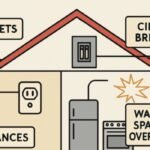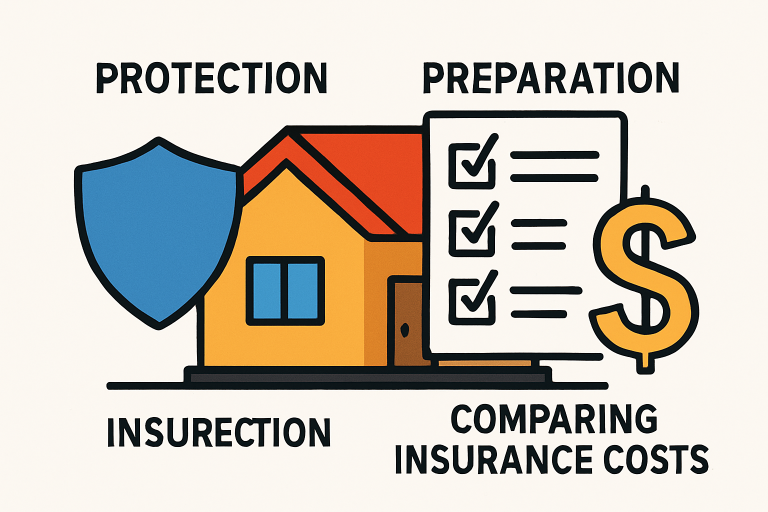Key Takeaways
- Understand the factors that influence your insurance quote.
- Gather necessary information about your home and personal details.
- Compare quotes from multiple insurers to find the best fit.
- Look for discounts and consider bundling policies to save money.
- Review and adjust your coverage periodically to ensure it meets your needs.
Table of Contents
- Introduction
- Factors Influencing Your Insurance Quote
- Gathering Necessary Information
- Comparing Quotes from Multiple Insurers
- Exploring Discounts and Bundling Options
- Reviewing and Adjusting Your Coverage
Introduction
Securing homeowners insurance that fits your needs can seem intimidating, but taking the right approach can protect your most valuable asset—your home—while giving you peace of mind. Understanding your options and the process can help you save money and get the coverage you need. For example, if you’ve ever wondered how much is AAA home insurance, you’ll find that shopping for coverage is about more than just finding the lowest rate.
The cost of your homeowners’ insurance is affected by various factors, and knowing these ahead of time makes it easier to compare quotes effectively. The process involves more than just filling out basic forms—being prepared with the right information and knowing what insurers are looking for helps you secure a better deal. All crucial steps are exploring top insurers, available discounts, and updating your policy as your needs change.
Comparing quotes from multiple providers ensures you get value for your money, but making an informed choice goes hand in hand with understanding what you’re paying for. Remember that some insurers may offer significant discounts for bundling different policies, installing home safety features, or having a clean claims history. By making these factors part of your strategy, you can secure coverage that’s thoughtfully tailored to you.
Shopping for homeowners insurance isn’t just a one-time event—periodically reviewing your policy can help you avoid gaps in coverage or paying too much. Whether you’re a first-time buyer or re-evaluating your current coverage, this guide will help you through each critical step. For a comprehensive overview of the homeowners insurance market and advice on finding the right coverage, you might find helpful resources from NerdWallet’s homeowners insurance guide.
Factors Influencing Your Insurance Quote
There are several key factors that insurers evaluate when calculating your homeowners insurance premium, each of which can have a substantial impact on the final cost:
- Location: If your home is located in an area prone to natural disasters like floods, earthquakes, or wildfires, or in a neighborhood with a high crime rate, insurers will likely charge higher premiums.
- Home Characteristics: The age, size, and construction materials of your home are significant factors. Older homes and homes built with materials that are less resistant to fire or weather damage are considered higher risk.
- Credit Score: In many states, your credit history is considered when calculating rates, as studies have linked credit scores to the likelihood of filing claims.
- Claims History: Homeowners who have filed frequent claims in the past are deemed riskier and often pay more for insurance coverage.
Knowing these factors gives you leverage when asking questions or seeking ways to reduce your premium, such as investing in home improvements or security upgrades.
Gathering Necessary Information
Having accurate and comprehensive details on hand will help ensure a smooth quoting process and allow insurers to provide you with the most relevant rates. Be sure to gather the following:
- Personal Information: Names, birthdates, and contact information for all homeowners listed on the policy.
- Property Details: The address, year the home was built, total square footage, construction type, and the number of bathrooms and bedrooms.
- Safety Features: A list of the home’s security devices, smoke detectors, alarm systems, deadbolts, and fire extinguishers.
- Current Insurance: Your present policy declaration page, including details of your coverage types, premium, and provider, if applicable.
Being well prepared not only saves time but also ensures your quotes are as accurate and personalized as possible. For more details on the kind of information to gather, Bankrate’s guide to getting a homeowners insurance quote offers a thorough checklist.
Comparing Quotes from Multiple Insurers
Don’t settle for the first quote you receive. Getting at least three different homeowners insurance quotes helps you make an apples-to-apples comparison. When evaluating your quotes, focus on these points:
- Coverage Options: Assess the specific protections included in each policy, such as liability, dwelling, and personal property coverage. Make sure each quote matches your needs.
- Premium Costs: Compare the annual or monthly cost for each policy, being aware of what influences premiums and what you’re getting for the money.
- Deductibles: Check how much you’ll be responsible for out of pocket before your insurance covers a claim. Lower premiums often accompany higher deductibles, so balance cost savings with what you can actually afford to pay in an emergency.
While price is important, always look into each insurer’s financial strength, claims satisfaction, and customer service record. Independent reviews from trusted sites like Forbes Advisor’s roundup of top homeowners insurance companies can help guide your assessment.
Exploring Discounts and Bundling Options
Many insurers offer several ways to reduce your homeowners insurance premium. Ask each provider about available discounts, such as:
- Multi-Policy Discount: Bundling your homeowners insurance with auto, life, or other insurance products through the same provider can offer substantial savings.
- Safety Features Discount: Homes equipped with monitored security systems, smoke alarms, burglar alarms, and deadbolts may qualify for discounts.
- Claims-Free Discount: If you haven’t filed a claim in several years, you might be eligible for lower rates as a reward for your low-risk status.
Don’t hesitate to ask specifically about which discounts you might qualify for, as not all are widely advertised.
Reviewing and Adjusting Your Coverage
Regularly reassessing your policy ensures your homeowners insurance aligns with your current needs. Major life events such as home renovations, purchasing expensive items, or changes in household makeup could all mean your coverage limits must be updated. Checking your policy annually helps you stay protected, without overpaying.
Homeowners’ insurance is an ongoing relationship rather than a one-time task. Take control by being proactive in your search for the right policy and diligent in reviewing your coverage over time. With informed preparation and continual re-evaluation, you’ll effectively protect both your home and your budget.
READ ALSO: Top Features to Look for in a Modern Manufactured Home










